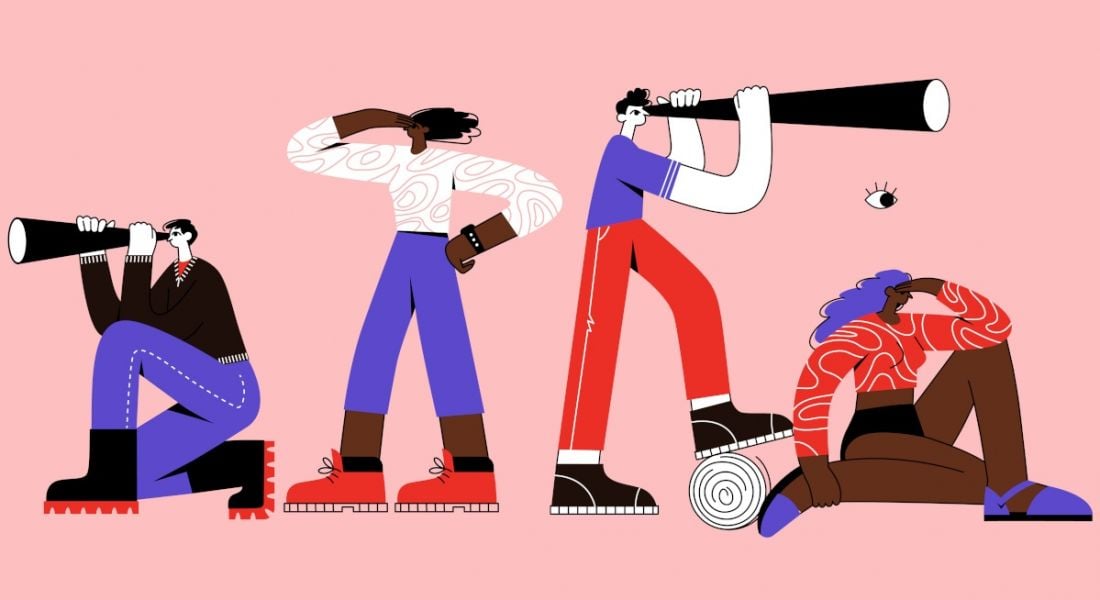Jonathan Finkelstein, SVP at Pearson, on why employers should strive to be adaptable and ‘transformative’ rather than reactive or proactive.
Company culture is a hard thing to get right. That’s the reason employers rely on HR and L&D teams to take care of their business’s most important asset – people.
But what about small companies that can’t afford to cover the cost of a massive HR team? How can they ensure they are maintaining a positive working environment that encourages employees to live up to their potential? It’s difficult and it requires constant evaluation. There is also the not-so-small matter of constantly changing tech and world events to consider; these have an impact on company culture, too.
To help answer some of these dilemmas, we decided to speak to Jonathan Finkelstein, SVP at education and skills company Pearson. Finkelstein says that companies of all sizes should strive for a transformative workforce rather than a reactive or proactive culture.
Perpetuating cycle of damage control
Before we go any further, what does Finkelstein mean by ‘transformative’ and why is it better than ‘proactive’ or ‘reactive’? Surely, being proactive and reactive is a good thing? Not always, in his view.
“Many organisations spend months, years and even decades in a reactive approach to workforce planning,” he says, explaining his theory. “External factors like global instability, economic uncertainty and technological advancements influence an organisation’s ability to optimise its workforce..
“When organisations are stuck in a reactive approach to workforce planning, their employees demonstrate low engagement with learning, and skills development has a marginal business impact.”
According to Finkelstein, companies in the reactive stage “struggle with talent and skills gaps and harbour concerns about how these deficiencies could avalanche in the future. They still rely on the external business environment to decide how their workforce will move forward.”
Often, companies don’t have the time or the inclination to track employee data such as satisfaction rates, leading to a cycle of reacting to whatever the next crisis is. There is little point in trying to tackle skills gaps without access to good data to aid decision-making – even if the efforts companies are making in this regard are noble. The problem with a reactive company culture is self-evident: employers have no contingency plans and are operating in fight or flight mode, which doesn’t bode well for workers.
The transformative theory
What, then, is Finkelstein’s idea of a transformative workforce? “A transformative view of your workforce positions your organisation to innovate, moving forward confidently rather than waiting to react to changing global forces,” he says, explaining his theory in a nutshell.
Learning your workforce’s weaknesses – using data – and planning for how to close skills gaps enables you to build a framework to understand future skills needs for your sector.
“The magic comes when your entire organisation, speaking a common skills language and equipped to verify skills and tie them clearly to tasks and roles, can use skills as a decisive advantage in strategic workforce planning. An organisation with a transformative approach to its workforce maps out how it will mitigate future risks through reskilling, upskilling, hiring and investing in technology to match the changing demands of the global skills economy. The result is improved business performance, increased career mobility and productive, loyal employees.”
Changing is not the ‘flip of a switch’
There you have it: the secret lies in data and action. Unfortunately, as Finkelstein points out, “the shift from a reactive approach to workforce planning to a proactive, and later a transformative one, isn’t the flip of a switch”.
“These changes take time, resources, data — and a willingness to look beyond the day-to-day to build a robust and resilient future. Evolving into a transformative approach to your workforce cannot be viewed as a one-time project with an end date. It’s not a destination — nor is it solely the purview of the HR department.”
Rather, it’s a collaborative, company-wide effort. It also has to be maintained and updated regularly. Companies’ L&D teams should come on board and implement effective learning and upskilling strategies for staff where appropriate. Earlier this year, Finkelstein’s Pearson colleague, Michelle Day, wrote about active learning and the difference that approach can make when it comes to empowering employees to want to learn and retain skills that will help them in their careers.
Lofty goals
“Every organisation is pursuing lofty goals,” says Finkelstein. “To reach those goals, leaders can’t afford to stay in first gear while the world is changing around them. They’ve got to understand how their business can move beyond merely responding to those challenges and develop the agility to thrive in today’s dynamic environment.”
It’s about looking to the future also, albeit without fear or trepidation. “Rather than stopping at preparing to face the future, companies can — and should — aim to innovate, outperforming the competition and fostering greater employee loyalty. Those above-and-beyond results emanate from a transformative approach to your workforce.”
Find out how emerging tech trends are transforming tomorrow with our new podcast, Future Human: The Series. Listen now on Spotify, on Apple or wherever you get your podcasts.




